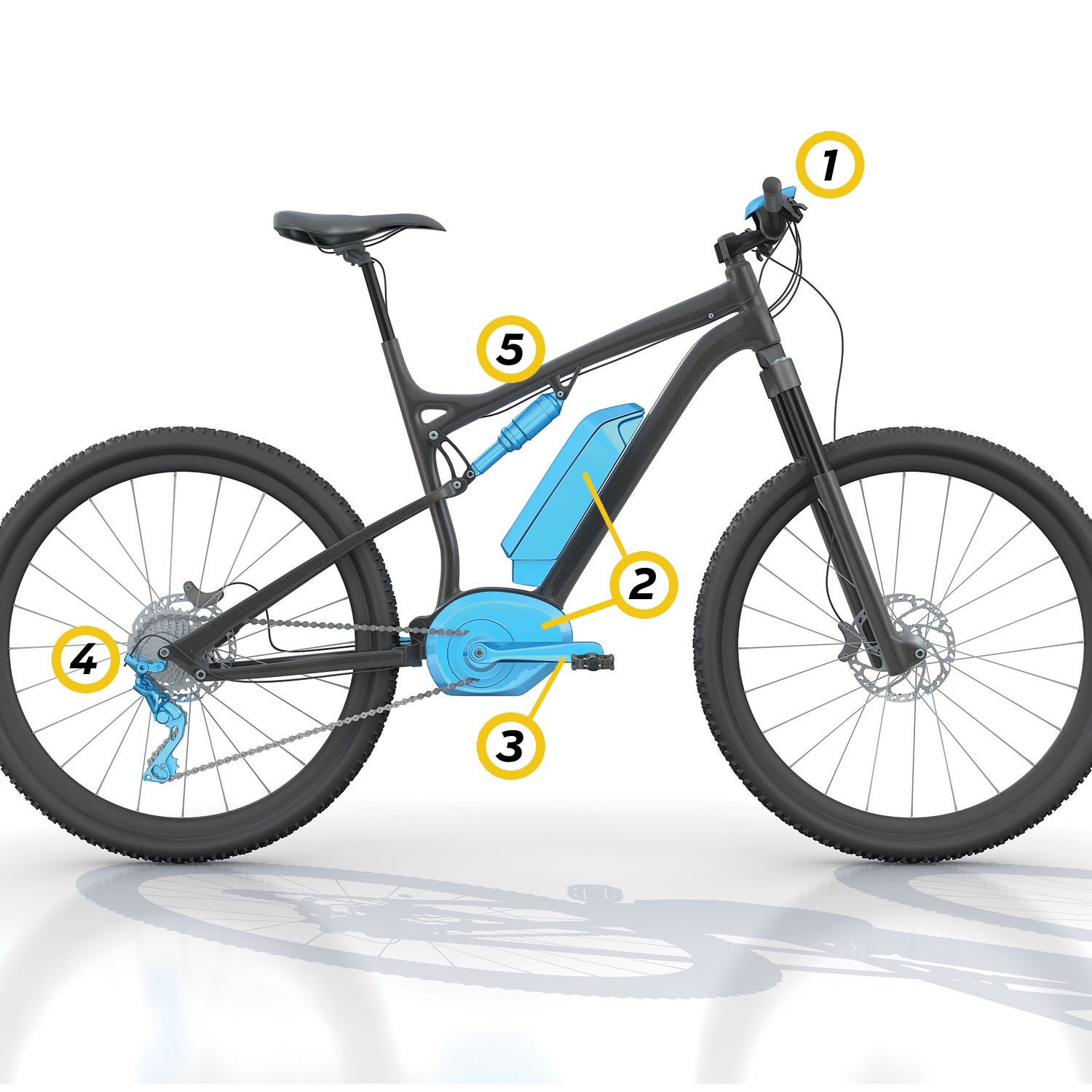In 2009, Shimano released Di2, an electronic shifting system for road bikes that cost $4,500. At first it was used only by pros, but prices have dropped (at least a little), and electronic components have proliferated. Best of all, the new technologies are making their way to mountain bikes. From today’s electronic drivetrains to tomorrow’s wireless suspension systems, these developments will change how you attack the trails.
1. Bar-Mounted Computers
Cycling head units are military mainframes compared with the speedometers of a decade ago. Most capture speed, cadence, heart rate, and power. Some, such as the , receive text messages and call notifications.
2. Pedal-Assist Motors
Electric mountain bikes were once heavy monstrosities. But brands like Cannondale, Scott, and Specialized are creating models that feel like normal bikes—only faster and easier to pedal. Proponents point out that e-bikes allow those who are less fit or are disabled to enjoy mountain biking, although bike advocates fear that the motors could lead to land-use conflicts and trail closures.
3. Power Meters
Thanks to a profusion of new entries, the cost of once expensive power meters has plummeted as low as $400, allowing mountain bikers to use power metrics to refine workouts, maximize training, and go harder when they need to most.
4. Drivetrains
This year, Shimano finally brought electronic shifting to mountain bikes with the rugged XTR M9050 Di2. Powerful derailleur motors make it possible to shift even when pedaling hard. The $1,200 premium over mechanical shifting keeps it mostly out of reach, but that’s likely to change soon.
5. Suspensions
Using input from accelerometers embedded in the fork and stem, an onboard chip senses changes in terrain and automatically adjusts the suspension. The systems, on bikes from companies like Ghost and Lapierre, react in as little as a tenth of a second.


